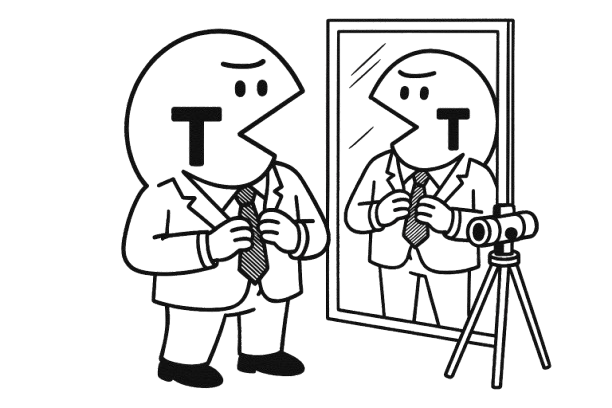The Culprit of Measurements: Grammar of Reality (Ep-5)

The next time you hear music, feel the warmth of sunlight, or watch light refract through a prism, remember: what you are sensing are observables such as energy, frequency, and direction. The mathematics behind them is guarded by Hermitian operators.
Hermitian operators are the special ones that, when we measure, guarantee real outcomes: real frequencies in music, real energy in sunlight, real angles in refraction. They are the universe’s way of making sure that whenever we reach out to observe, we never get surprises like “3+2i joules”.
Our Journey So Far...
By now, you should be tuned into the Ivethium style. We have been tracing how the generalization of vectors, lengths, and inner products blossoms into a whole new kind of arithmetic. In our signal processing series, we saw how a linear operator acts in this broad sense, and then we started layering constraints step by step, moving from adjoint operators to unitary operators and then to normal operators.
Each constraint unlocked elegance. Adjoint operators let us flip things across inner products. Unitary operators preserved lengths and angles with absolute fidelity. Normal operators ensured operators behave consistently with their adjoints, keeping the structure stable and predictable. We are clearly getting addicted to elegant constraining, because through constraints, emerges beautiful patterns. At every step, we made sure to return to the ideas of vectors and inner products, connecting the abstract rules to applications and explaining why reality itself works this way, guided by the very grammar we are building.
So let us push harder. What if an operator does not need a separate adjoint at all? What if it can move across the inner product and meet itself perfectly on the other side? What happens when an operator is its own adjoint?
This is where we are headed. In true Ivethium style, we are about to open up Hermitian operators like a story, going beyond syllabus paths, not just to learn the mechanics but to see why they stand at the very heart of how we understand observables and reality itself.
When the Operator Becomes Its Own Adjoint
The constraint: An operator $A$ is Hermitian if $A = A*$. In other words,
$⟨Ax, y⟩ = ⟨x, Ay⟩$ for all vectors x and y.
What we're saying is this: instead of needing a separate adjoint $A*$, the operator can seamlessly move from one side of the inner product to the other. It's its own adjoint.
This seemingly simple constraint unleashes Nature's Three Guarantees:
Guarantee 1: All eigenvalues are real.
No complex eigenvalues. Ever. If $λ$ is an eigenvalue of a Hermitian operator, λ ∈ ℝ. Period.
Quick Proof
If $Av = \lambda v$ for some eigenvector $v \neq 0$, then taking the inner product with $v$ gives
$\langle Av, v \rangle = \lambda \langle v, v \rangle.$
But since $A$ is Hermitian,
$\langle Av, v \rangle = \langle v, Av \rangle = \langle v, \lambda v \rangle = \lambda \langle v, v \rangle.$
Since $\langle v, v \rangle > 0$ (real and positive), we have
$\lambda = \lambda^*,$
which means $\lambda$ is real.
Guarantee 2: Eigenvectors from different eigenvalues are orthogonal.
Different eigenspaces maintain perfect separation. No interference, no mixing.
Quick Proof
Let $Av_1 = \lambda_1 v_1$ and $Av_2 = \lambda_2 v_2$ with $\lambda_1 \neq \lambda_2$.
Taking the inner product gives
$\langle Av_1, v_2 \rangle = \lambda_1 \langle v_1, v_2 \rangle.$
But using the Hermitian property:
$\langle Av_1, v_2 \rangle = \langle v_1, Av_2 \rangle = \langle v_1, \lambda_2 v_2 \rangle = \lambda_2 \langle v_1, v_2 \rangle.$
So we have
$\lambda_1 \langle v_1, v_2 \rangle = \lambda_2 \langle v_1, v_2 \rangle,$
which means
$(\lambda_1 - \lambda_2)\langle v_1, v_2 \rangle = 0.$
Since $\lambda_1 \neq \lambda_2$, we must have
$\langle v_1, v_2 \rangle = 0.$
Guarantee 3: Complete diagonalizability with orthonormal basis.
Every Hermitian operator can be written as $A = QΛQ*$ where $Λ$ is diagonal (real entries) and $Q$ has orthonormal columns.
(Note: We haven't discussed diagonalization yet and we'll dive deep into this beautiful topic soon. For now, just know that this guarantee means every Hermitian operator has a "natural coordinate system" where it becomes beautifully simple.)
These aren't just nice mathematical properties, they're the fundamental guarantees that make measurement and stability possible.
Now, before we explore why this constraint is so powerful, let me show you something interesting...
The Demand
Here's the thing: physics didn't start with Hermitian operators.
Long before anyone knew what an "operator" was, people were measuring things. The length of a rope. The mass of grain. The energy released when wood burns. The frequencies of a plucked string. Every single measurement, without exception, came out as a real number.
This wasn't a mathematical choice. It was an empirical fact. Reality simply refused to give us imaginary measurements (Not sure why. I hate it when I say not sure why.).
Then came the question: when we developed the formalism of linear algebra and Hilbert spaces, what mathematical structures would guarantee real outcomes? What class of operators would ensure that:
- Outputs are real (matching what we measure)
- States decompose cleanly (orthogonality, like we observe)
- Spectral structure aligns with how we record data
The answer turned out to be Hermitian operators.
So here's the deeper truth: Hermitian operators weren't imposed on physics by some cosmic decree. They were selected because they're the mathematical codification of our empirical requirement that observables give real values.
We observed that measurements are real, then asked: what mathematical structures ensure this? Hermitian operators are mathematics catching up to reality.
Three Glimpses of Hermitian Operators in Action
Let's see this mathematical constraint at work in three completely different domains:
1. Reflection (Geometry). Take a reflection across the x-axis:
$$R = \begin{bmatrix} 1 & 0 \\ 0 & -1 \end{bmatrix}$$
Its eigenvalues are $+1$ (things that stay put) and $-1$ (things that get flipped). Nothing imaginary, no "ghost directions." Just a clean yes/no: stay or flip. That reliability is why reflections in computer graphics or robotics always behave the way you expect Hermitian symmetry keeps them tethered to reality.
Vibrating String (Music). The second derivative operator $d²/dx²$ that governs a violin string is Hermitian. Its eigenfunctions $sin(nπx/L)$ produce real frequencies:
$$ωₙ = nπc/L, n = 1,2,3,...$$
That's why you hear a violin sing at $440 Hz$, not "$440i Hz.$" Engineers use the same property to design bridges and skyscrapers ensuring resonances are real, so structures vibrate instead of "decaying into the complex plane."
Covariance Matrix (Data & Faces). Let $X$ be a random data vector (e.g., the pixel values of a face image), and $μ = E[X]$ its mean. The covariance matrix is:
$$Σ = E[(X - μ)(X - μ)ᵀ]$$
It is always symmetric (hence Hermitian).
- Its eigenvectors give the main directions in which the data varies.
- Its eigenvalues (always real and nonnegative) tell you how much variation lies in each direction.
This is the core of Principal Component Analysis (PCA). In face recognition, PCA discovers "eigenfaces" characteristic patterns (like eye placement, nose shape, or jawline) that capture the biggest differences across a population of faces. Each new face can then be expressed as a combination of these eigenfaces.
These eigenfaces look like this. (I know I am only giving you a glimpse here. The idea deserves a full Ivethium article of its own, perhaps in the ‘AI’ series).

Hermitian structure ensures the directions and variances we extract from real data are themselves real and interpretable.
So... All Observables Are Hermitians?
In Ivethium, we are not just talking quantum. We are uncovering a universal grammar: eigenvectors, eigenvalues, Hermitian operators, that seems to show up all across physics. Quantum mechanics will certainly get its full spotlight later in the series, but the grammar itself might be bigger than that.
And let me pause here. This is something I have been thinking about for a long time. I have never really seen it laid out this way in a textbook. But Ivethium is not about repeating what is already written. It is about brainstorming with you, testing hunches, and seeing where the grammar leads. So here is my itch: can we interpret all observables, even in classical mechanics, as Hermitian operators?
To see why this thought nags me, let us step into the classical stage: the phase space.
Phase space is the master map of a physical system. Every point carries two coordinates:
- Position $q$: where the system is
- Momentum $p$: how it is moving
Together, $(q,p)$ uniquely specify the state of the system. Think of phase space as a giant chessboard of reality. Each square is a complete snapshot of "where you are and how fast you are going." (We will explore phase space in depth under the Physics branch of Ivethium.)
In this setting, an observable is just a real-valued function on phase space: $f(q,p)$.
Position itself is an observable ($q$), momentum is another ($p$), and energy is yet another ($H(q,p)$).
Now, if the system happens to be in a perfectly sharp state at $(q_0,p_0)$, how should we describe it? Let us test the idea.
Treat $f(q,p)$ as a multiplication operator: $(M_f \psi)(q,p) = f(q,p)\psi(q,p)$.
If a state $\psi$ is to always report the single value $f(q_0,p_0)$ for every observable $f$, then it must satisfy $M_f \psi = f(q_0,p_0)\psi$.
That looks just like an eigenvalue equation. Test it with $f(q,p)=q$: $q\psi(q,p) = q_0\psi(q,p)$, forcing $\psi$ to vanish unless $q=q_0$.
Test it with $f(q,p)=p$: $p\psi(q,p) = p_0\psi(q,p)$, forcing $\psi$ to vanish unless $p=p_0$.
So $\psi$ can only live at the single point $(q_0,p_0)$. The only distribution (yes, "distributions"... not functions in clasical sense and also we are not in the hilbert space when it comes to "distributions") with this property is the Dirac delta spike: $$\psi(q,p) = \delta(q-q_0)\delta(p-p_0)$$.
And indeed, for any observable $f$: $$f(q,p)\delta(q-q_0,p-p_0) = f(q_0,p_0)\delta(q-q_0,p-p_0)$$.
The delta acts like an eigenvector, and the observed value $f(q_0,p_0)$ is the eigenvalue.
So whether in the classical world (functions on phase space) or the quantum world (Hermitian operators on Hilbert space), it seems like the grammar is the same: observables reveal themselves as eigenvalues when states sharpen into their natural forms.
I will not dictate this as final truth. Let us treat it as an open trail. Maybe it even deserves its own spin-off series: Ivethium Going Nuts, where we let these wild hunches run free and see how far they carry us.
But Who Is Observing?
One caution before we move on. Even though observables line up beautifully with eigenvalues and states behave like eigenvectors, this picture does not tell us who is observing or why one specific outcome shows up. The grammar explains the possible values reality can produce, but it does not explain the act of choice itself. In classical physics, we usually assume the system was already in a definite phase-space point, so the “observer” is just revealing it. In quantum physics, that assumption breaks down. States can be superpositions, and the mystery of why an observer sees one eigenvalue and not another is left hanging. Hermitian operators give us the rules of the language, but not the author behind the sentence.
Bridge to Next Topics
And here's where it gets beautiful: because Hermitian operators are guaranteed to be diagonalizable, their eigenvalues are not just real. They form the spectrum of minimum energy variations.
This insight bridges us to profound topics (Some answers the question we raised in the previous post):
- Diagonalization: How to make any Hermitian operator simple by finding its natural coordinate system
- Rayleigh quotient: How eigenvalues emerge as energy optimizers—nature's way of finding minimum and maximum energy configurations
- Courant-Fischer-Weyl theorem: The hierarchy of constrained minima that governs everything from quantum chemistry to structural engineering
Each eigenvalue represents an optimal energy state. Each eigenvector shows the shape that optimization takes.
